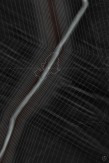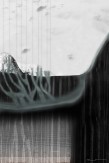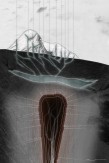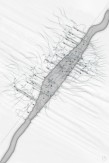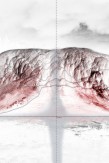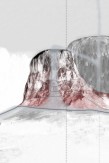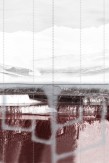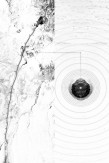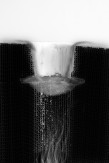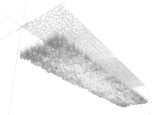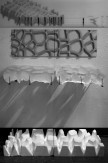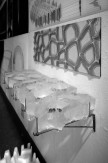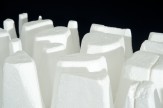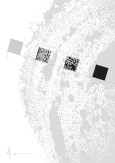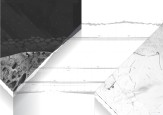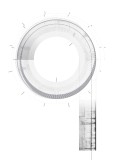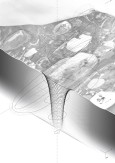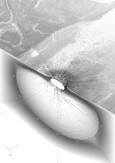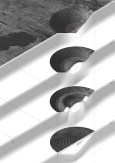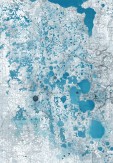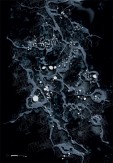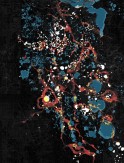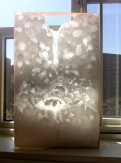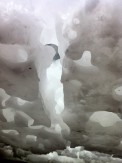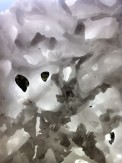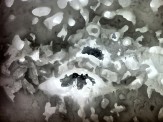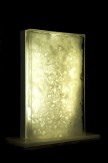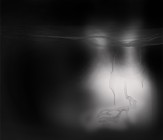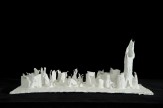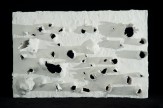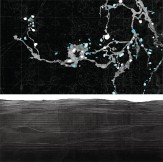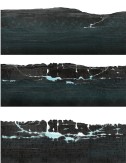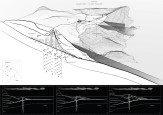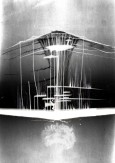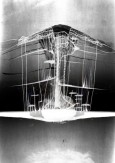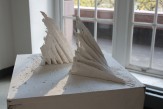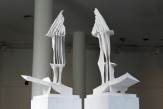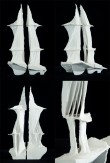Master of Architecture II Spring 2012

End of the Year Exhibition 2012
ARCHITECTURE OF NATURE/NATURE OF ARCHITECTURE
Professor: Diana Agrest
Instructor: Laila Seewang
This studio focuses on the question of Nature from the philosophical and scientific discourses that have explained it throughout history, and its transformation to the present conditions of the natural world as they affect our modes of habitation. A different dimension of space, time and scale is the object of this exploration. In this project, those questions take a preeminent position in the type of natural sites selected and the subsequent process of transformation.
The scale is vast in most cases, dealing with sites such as deserts, canyons, rivers, glaciers, fault lines, volcanoes, salt lakes or seashores. These are places that took billions or millions of years to develop and thousands more for transformations to be perceptible, until recent years where processes of transformation have accelerated. Time here is of a cosmic dimension that relates to the universe. It not only becomes essential in every transformative proposal, but also places each one outside the traditional boundaries of Architecture, Urbanism or Landscape.
Historically, there has always been an active interaction between Nature - as a real object and as an object of study - and Architecture. At this moment in time, this interaction takes a prominent position. The subject of Nature in its many complex modes of interaction with Architecture - scientific, philosophic, economic, political, ideological - is critically reexamined in this studio, through a process of ‘reading and rewriting’ at various scales, ranging from the national to the regional and local.
Architecture in all its modes of configuration at every scale is the locus where these conditions of the natural world are enacted, moving from ideological concepts on which architectural discourse and the architectural project are based, to the interaction with other domains.
‘Potentials’ is the leading concept for this exploration; potential sources, potential sites, potential elements, potential new architectural / urban concepts. Traditional concepts, such as Site, Land Use, Materiality, Ecology and Energy are critically reassessed.
< Back to Selected Graduate Design Studio Projects
VIEW INDIVIDUAL PROJECTS BELOW
Projects
-
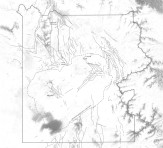
Mammoth Hot Springs
-
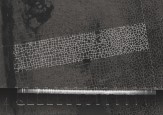
[Perma]frost Landscape
-
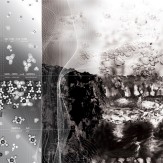
Between Two Waters
-
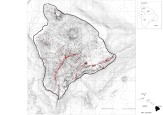
Oblique Tectonics
Back
Mammoth Hot Springs
Mammoth Hot Springs – Yellowstone National Park
Wyoming, United States
Betty Bluvshtein
The chosen site for study was the Mammoth Hot Springs, a relatively small geothermal feature located within Yellowstone National Park on the border between Wyoming and Montana. A unique characteristic of these springs was their capability to deposit rich amounts of travertine in one particular place. I focused on the story and narrative behind the process, gaining insight on how such a process occurs, both procedurally and temporally.
I began by researching the origins of Yellowstone and discovering a very complex and intrinsic underground system that created the above ground residue. Yellowstone is a very active geological area, fueled by an active caldera that spreads heat throughout the landscape via hundreds of fault lines. One fault line in particular is considered to be one of the strongest, the Norris-Mammoth fault, which connects the Yellowstone Caldera, the Norris Geyser Basin and the Mammoth Hot Springs. Along this line, heat travels at varying depths and intensity, in combination with a hidden river that is heated below grade by the fault. This water travels underground along the fault line. Its sources are the Norris Geyser Basin as well as the nearby Gardner River Mountain runoff. As it travels it gains speed, heat and minerals. Pressure pushes the water up to the surface, transforming it into travertine deposits when it reaches the ground. The Mammoth Hot Springs are essentially a residue of this complex underground system that demonstrate a singular poetic action – puncturing.
In essence, water is puncturing the ground to leave its mark, its narrative on the surface. Taking this into account, a proposal developed that involved both heightening the processes occurring by manipulating the surface, and revealing the seemingly invisible processes occurring below ground. By creating punctures along the Norris-Mammoth Fault Line that would reach both the underground river and the heat below, the surface, in varying degrees of intensity, would act as a host for more travertine deposits. These deposits would acts as markers, as a new path towards Mammoth, allowing the process to create the story and path.
This project is one of both narrative and process. The discovery and investigation of unseen processes and the residues they leave behind have an immense implication on architectural discourse.
[Perma]frost Landscape
[Perma]frost Landscape
Seongmo Ahn
The permafrost process of freezing and thawing in the North Slope of Alaska produces permanent vibrations of the ice and surface water. This creates polygonal cracks and a concomitant network of ice wedges that frame thermokarst lakes. As a result of this process pingos, or ice “volcanoes,” which contain a pure water ice core are created. These processes relate to each other in different spatiotemporal scales, creating unique permafrost landscapes.
Between Two Waters
Between Two Waters
Ling-Li Tseng
The landscape of central Florida is littered with sinkholes, caused by the collapse of the ground into a vast system of underground limestone caves. Focusing on Lake County as a point of research, a process of understanding the sinkhole allows for a greater understanding of their formations. Acid water erodes the land from the ground surface above and underground water supports the ground structure below. In this sense, sinkholes serve as a connection between these two waters.
Oblique Tectonics
Oblique Tectonics: Hidden Geometry in Kilauea Volcano, Hawaii
Lawrence Lek
"The volumes, the surfaces, the lines – in one word, the structures that build a tectonic construction – do not represent the whole pictures: there is also the movement that animated and still animates these bodies because the history continues and we live under no particular privileged conditions at any given time in this great process.”
ÉMILE ARGAND – TECTONICS OF ASIA (1924)
When Polynesian sailors first discovered the group of islands now known as Hawaii, they found that the volcanoes were increasingly active towards the South. They attributed this to the god Pele, who they believed moved from island to island, leaving behind extinct volcanoes in his wake and activating a chain of fire that led towards Kilauea Volcano, where he now resides. Although Hawaii's geomorphology is now scientifically explained by the theory of plate tectonics, seismologists still monitor the behavior of Kilauea, the most active and capricious volcano in the world.
This project traces the unseen structures and patterns that lie beneath the surface of the ‘Big Island’ of Hawaii. By interpolating seismological data with the surface geometry of Kilauea, the internal mechanisms and forces lying dormant are revealed. The islands are entirely built from volcanic magma, forced up by pressure within the earth to freeze into solid rock at the surface. However, many of these magma intrusions remain invisible, never breaking out into a surface eruption. Instead, they swarm together, solidifying into knife-like granite intrusions that cut into the old volcano. The build-up of pressure from these intrusions creates cracks on the surface rock, through which subsequent eruptive lava flows. Over thousands of years, the accumulation of pressure can lead to massive landslides that collapse entire flanks of the island into the sea, causing Tsunamis that devastate the Californian and Japanese coastlines.
Oblique Tectonics is a proposal to superimpose a new pattern of cracks into the surface rock, in order to divert lava flows and release pressure buildup in the terrain. By reconfiguring the tectonics of the surface, this action will prevent catastrophic earthquake-driven landslides from occurring, and will divert lava flows to form a new archipelago of islands at the boundary of Kilauea. The intertwined relationship between ancestral lava and subsequent eruptions creates a three-dimensional palimpsest of magmatic geometry, revealing the hidden tectonics of the Earth.


